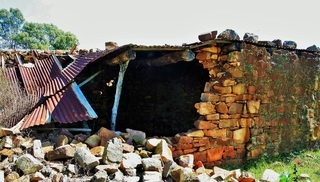This is the second in an occasional series on this topic. In this installment we will focus upon facilities renewal rates. We’ll begin by exploring what exactly facilities renewal entails.
Facilities renewal, broadly speaking, refers to strategic reinvestment into a facilities portfolio. It includes replacement of worn-out components as well as updating of facilities to meet new missions, changed codes and revised standards.
Defining Renewal
Traditionally, renewal has only considered replacement in-kind, but that is an erroneous position. Effective planning for facilities renewal should cover all the necessary upgrades as time goes by. For example, although updating for changing codes and alterations for new missions typically are funded by separate sources, these items must not be omitted from the discussion of renewal rates and renewal planning. This work should be accomplished concurrently with regular renewal work to obtain the maximum benefit from investments in facilities renewal.
Renewal funding should also include construction costs for new facilities, if those new facilities are replacing ones that were demolished. If you merely construct new facilities that are not replacement facilities, you are adding to the long-term renewal requirement, not satisfying an existing renewal requirement.
Renewal accounts for the single largest budget item associated with maintaining a facility portfolio. As a result, it is usually the first target for reduction when budgetary constraints require cuts. This is, of course, the genesis of the deferred renewal problem. The inevitable questions that arise from proposed cuts are:
- At what level(s) should I be funding facility renewal?
- What impact does reducing renewal funding have on the condition of my portfolio?
- How does renewal funding reduction affect facility occupants (end users)?
Renewal Budgeting
Numerous books and articles have been written concerning effective renewal funding rates. Their calculation is the focus of constant debate. There is not a single, authoritative source that states a renewal funding level. However, several sources support the premise that it should be set at a rate of approximately 2.5 percent of plant value.
-
Guidelines issued by the Naval Facilities Engineering Command (NAVFAC) state that the capital cost of facilities ownership is 2.5 percent of plant value. NAVFAC only sets standards, however, and is not responsible for providing funding. The result is that shore installations rarely receive capital funding at this lofty level. Therefore, the overall condition of facilities is marginal, at best.
-
In 1991, APPA, NACUBO and SCUP jointly sponsored a publication titled Managing the Facilities Portfolio by Sean C. Rush. In this book, projection formulae predict the impact of changing funding percentages on facilities condition. It concludes that, under most economic parameters, a renewal rate of between 2.0 percent and 2.5 percent of plant value per year maintains a facility in its current condition.
-
Finally, most studies of long-term facility ownership reveal that, under normal circumstances, a building owner will reinvest the cost of constructing the building over a period of 40 to 50 years in renewing the building. This translates into an effective renewal rate of 2.0 to 2.5 percent of plant value per year.
Thirty years later, the number hasn’t changed. The figure is supported by ISES Corporation’s three decades of experience conducting facility condition assessments. When we apply the projection formulae referenced above to our database of more than 350 clients (in higher education, K-12, hospitality, federal and state governments, municipalities and healthcare), a renewal rate of 2.0 percent will typically allow for maintenance of the status quo. This leads to the next question: Is mere maintenance of the status quo acceptable?
In most cases, it is not, as it allows for no facility improvements. Furthermore, the majority of our clients don't receive adequate renewal funding for even status quo maintenance from year to year. They are typically underfunded, being at or even below 1.5 percent of plant value. This has resulted in the phenomenon previously called deferred maintenance, but which should more accurately be termed deferred renewal.
Read the first in this series of blogs where we explored the difference between deferred maintenance and deferred renewal.


